Key takeaways
- Activist teacher resources empower educators to engage students in meaningful, real-world conversations that foster critical thinking.
- Scratch enhances learning by making concepts tangible, encouraging problem-solving, collaboration, and creativity among students.
- Effective teaching with Scratch involves setting clear goals, promoting experimentation without fear of mistakes, and facilitating collaborative feedback.
- Evaluating student engagement requires observing their enthusiasm, the quality of their questions, and collecting reflections to understand their personal connections to the material.

Understanding Activist Teacher Resources
Activist teacher resources are more than just lesson plans—they are tools that empower educators to challenge the status quo. I’ve found that these resources help me address real-world issues in a way that resonates deeply with my students. Have you ever noticed how learning becomes more meaningful when it connects to students’ lives and values?
What strikes me most is how these resources invite us teachers to take a stand. They encourage us to create classrooms that don’t shy away from difficult conversations but instead use them as stepping stones for critical thinking. Isn’t that the kind of engagement every learner deserves?
From my experience, using activist resources means embracing vulnerability as an educator. It’s about showing students that learning isn’t neutral—it’s an opportunity to ignite change. When I approach teaching this way, I see a spark in students that textbooks alone rarely inspire.
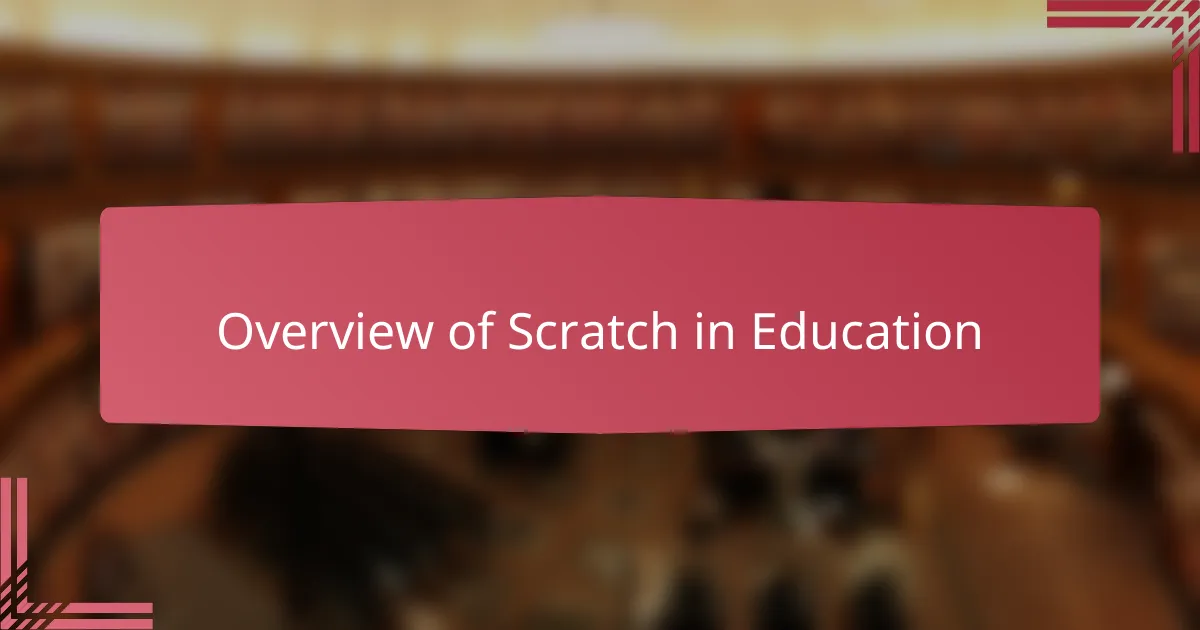
Overview of Scratch in Education
Scratch has been a game-changer in my classroom when it comes to making learning interactive and joyful. This visual programming language invites students to become creators, which I’ve found sparks curiosity and confidence in ways traditional lessons often don’t. Have you ever seen a student’s face light up when they realize they just made a character move or tell a story through code?
What’s fascinating to me is how Scratch naturally encourages problem-solving and creativity simultaneously. While my students figure out how to animate or build games, they’re also practicing logical thinking and persistence—skills that matter far beyond the screen. I’ve noticed that this hands-on approach keeps them engaged because the learning feels personal and relevant.
Integrating Scratch into activist teaching has deepened the impact even more. When students use Scratch to explore social issues or create messages they care about, their voices come alive in powerful ways. Doesn’t that kind of meaningful engagement remind us why we teach in the first place?
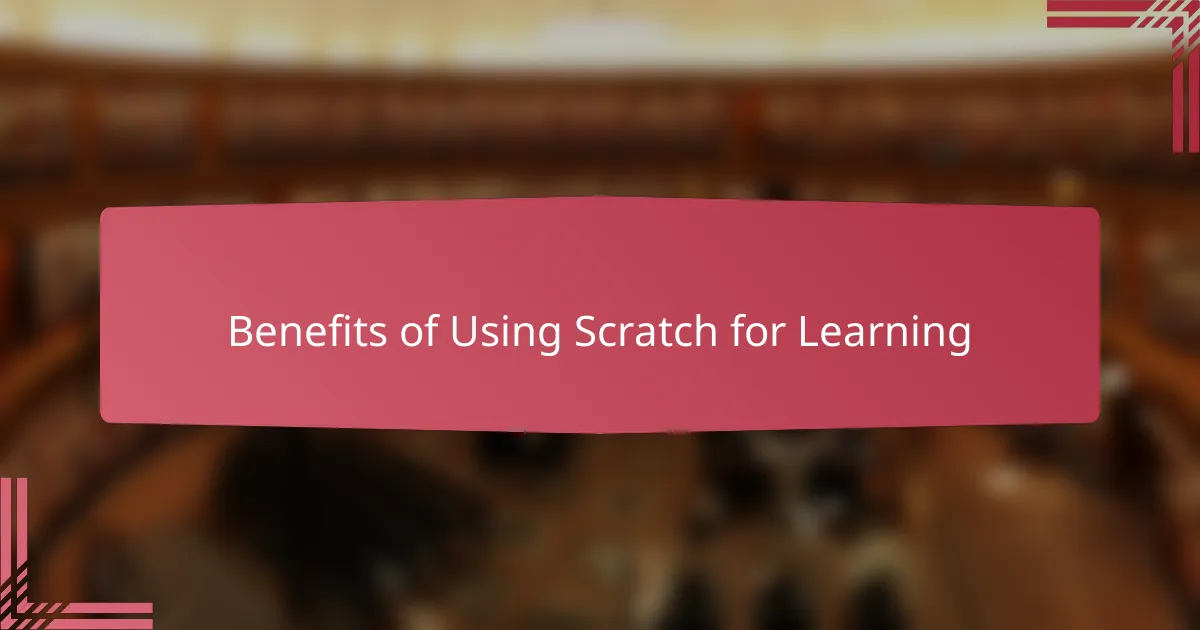
Benefits of Using Scratch for Learning
One of the biggest benefits I’ve seen with Scratch is how it turns abstract concepts into something tangible. When my students drag and drop blocks to code, they’re not just learning programming—they’re learning to break problems down and think step-by-step. Have you ever watched a student’s confidence soar after they solve a tricky sequence? It’s truly rewarding.
Scratch also makes collaboration feel natural. I remember a project where my students worked in pairs to create animations about climate change. They shared ideas, debugged each other’s code, and celebrated their successes together. Seeing them support one another made me realize how Scratch fosters not just individual learning but community building too.
What really stands out to me is how Scratch democratizes learning. It welcomes every student, regardless of background or skill level, to become a creator. I’ve witnessed shy students find their voices by designing stories that matter to them. Isn’t that the kind of empowerment we hope to give every learner?
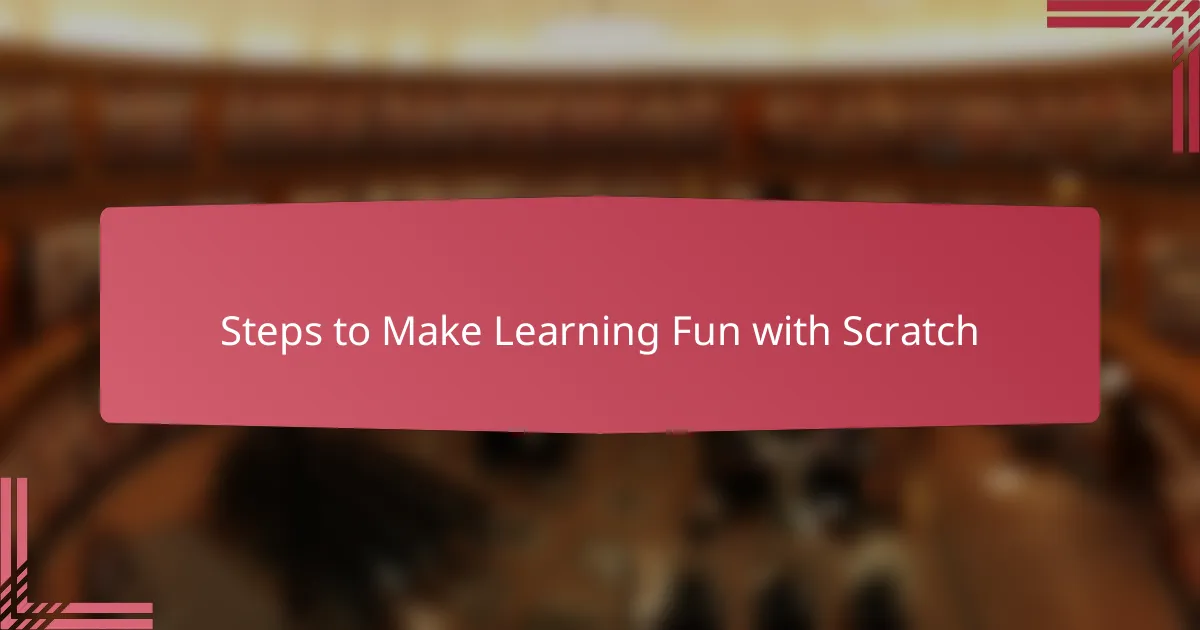
Steps to Make Learning Fun with Scratch
First, I start by setting clear, achievable goals with my students, so their Scratch projects have purpose and direction. When they see their ideas take shape on screen, their excitement is contagious. Have you ever witnessed a quiet student suddenly light up because they just brought a story or game to life?
Next, I encourage exploration and experimentation without fear of mistakes. With Scratch’s simple drag-and-drop interface, students feel safe to try new things, tinker with blocks, and learn from errors. I often remind them, “Every bug you fix is a step toward becoming a better coder,” which keeps frustration at bay and curiosity alive.
Finally, I integrate collaboration by having students share and critique each other’s projects. Watching them exchange feedback and build on ideas transforms the classroom into a vibrant community. This process not only makes learning social but also deepens their understanding, since teaching others clarifies concepts in my experience. Doesn’t that make the whole journey more rewarding?
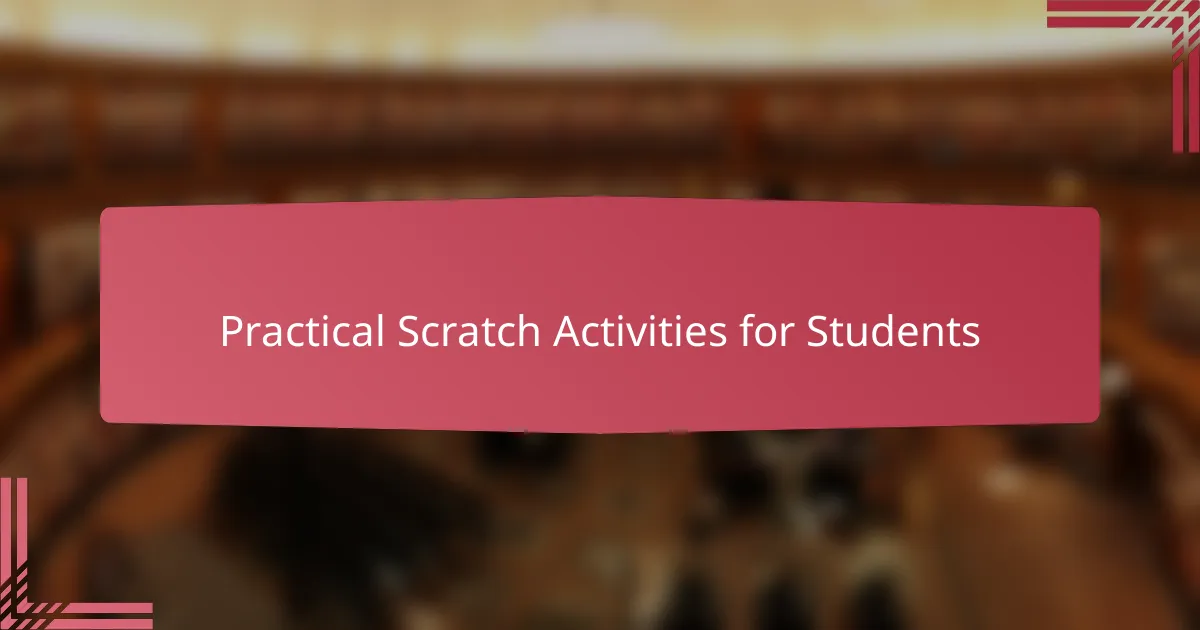
Practical Scratch Activities for Students
When I first introduced Scratch activities, I noticed how students immediately became more engaged when given the chance to create something meaningful themselves. For instance, I guided them to design interactive stories around environmental issues, and the way their ideas translated into animations was inspiring. Have you seen how turning abstract topics into creative projects can transform student enthusiasm?
One activity I love is having students build simple games that address social themes, like fairness or community. Watching them debug their code and figure out solutions together reminds me that learning is as much about persistence as it is about creativity. It’s thrilling to hear their “aha” moments when a tricky block finally works as intended.
I also make it a point to include reflection prompts after each Scratch project, asking students what they learned about the topic and the coding process. This not only deepens their understanding but gives me insight into their thinking. Isn’t it amazing how hands-on tech activities can foster both critical thinking and self-expression in one go?

Tips from an Activist Teacher
One tip I’ve learned as an activist teacher is to always center student voices in the learning process. When students feel their perspectives matter, they engage more deeply—not just with the content, but with one another. Have you noticed how classrooms transform when students lead discussions or shape projects that reflect their own experiences?
Another insight from my experience is to embrace discomfort as part of growth. Activist teaching isn’t about sugarcoating issues; it’s about creating a space where tough questions can be asked and explored honestly. I’ve seen firsthand how this vulnerability builds trust and sparks meaningful dialogue among students.
Finally, I recommend connecting learning to real-world action whenever possible. When students see their work—whether through Scratch coding or other projects—as a tool for change, their motivation skyrockets. Isn’t it empowering for learners to realize that their ideas and skills can make a difference beyond the classroom walls?
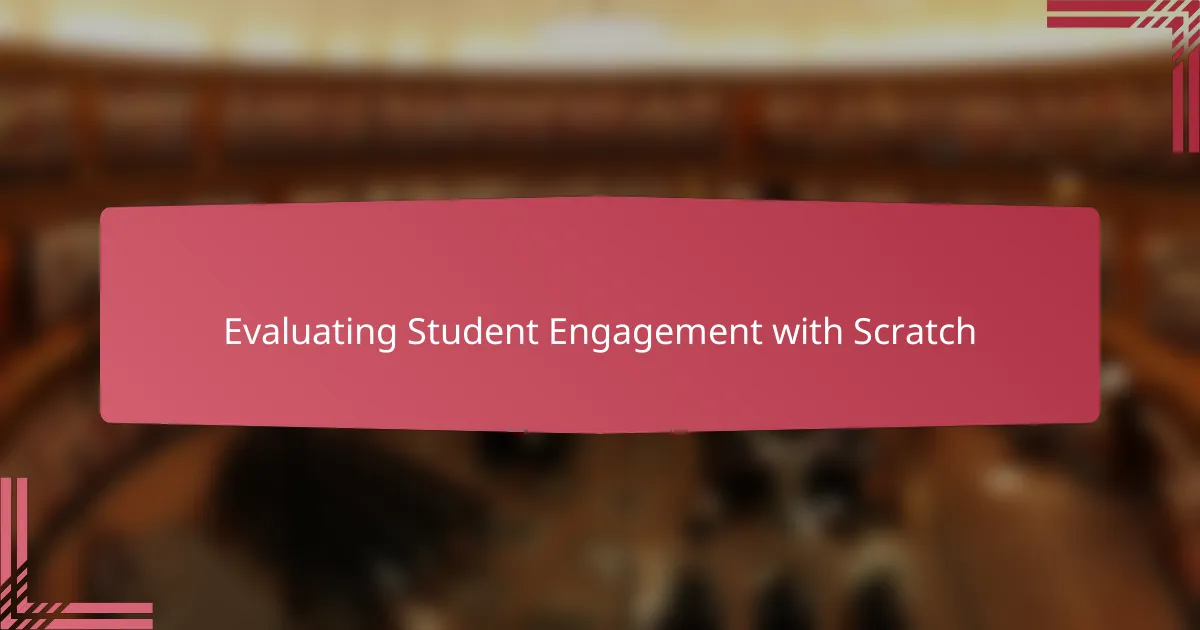
Evaluating Student Engagement with Scratch
Evaluating student engagement with Scratch goes beyond just observing who’s paying attention. I’ve learned to look for moments when students lose track of time because they’re so absorbed in bringing their ideas to life. Isn’t it telling when a usually restless learner suddenly asks for just “five more minutes” to perfect their project?
I’ve also found that the quality of questions students ask during Scratch activities reveals a lot about their engagement. When they start troubleshooting on their own or propose creative twists, it shows they’ve moved from passive receivers to active problem solvers. Have you experienced that shift, when curiosity takes over and sparks real learning?
Lastly, collecting student reflections has been invaluable. Asking them what they enjoyed or found challenging opens a window into their thinking and helps me tailor future lessons. I remember one student who shared that coding felt like telling their own story, which made me realize engagement isn’t just about task completion—it’s about personal connection too.